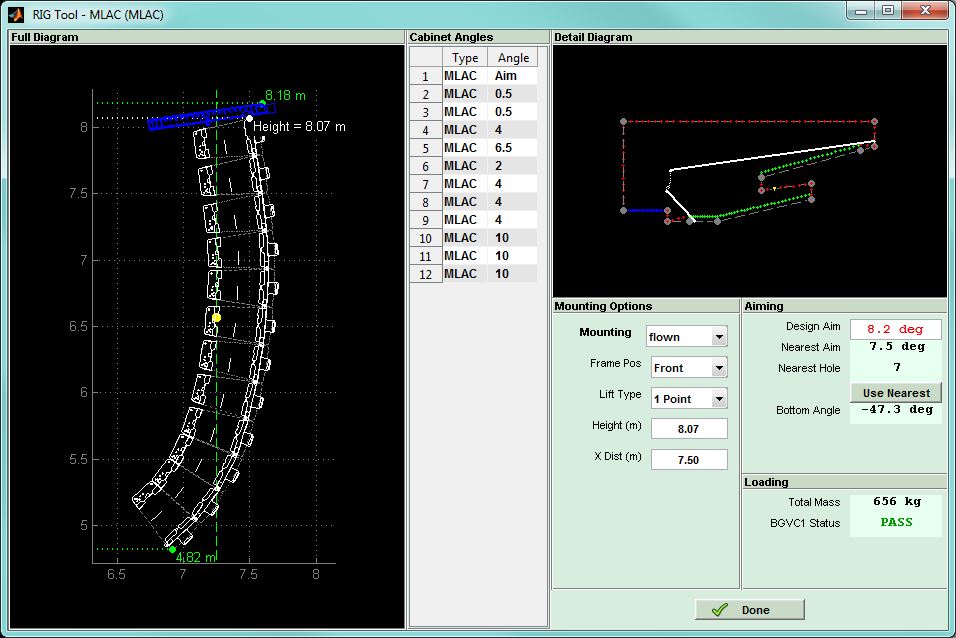- Martin Audio has announced a significant upgrade to Display, the software brain of the MLA Series. Display is the numerical optimization process that eliminates lengthy trial-and-error tuning sessions, so that an MLA Series system achieves the required audience coverage straight out of the box.
- Based on a highly accurate acoustic model of array behavior, it gives a very precise prediction of the direct sound produced over the audience as well as areas where sound is to be minimized. It takes the guesswork out of array design, deployment and control‚ generating ready-to-use DSP filter configurations and comprehensive rigging information, including mechanical load safety analysis.
- The patented optimization process evaluates thousands of potential array configurations against multiple target functions‚such as frequency response, flatness, and sound leakage into non-audience areas. With the computer working behind the scenes, the engineer retains full artistic control over the system‚ balance, or "house curve‚" Display simply replicates what the engineer hears at the mix position to the entire audience.
- Display now fully supports all MLA products including Compact and Mini. Deployment options, such as 'ground-stack' and 'flown', are selected at the start of the design process. The comprehensive rigging view then provides detailed mechanical information to help construct and position the array.
- Notably, the 'Slice Import' function from existing Display projects is now available making it possible for the user to build a database of designs that can be utilized again upon returning to the same venue.
- Another significant enhancement is the inclusion of non-linear index points making the prediction of how the array will perform in the real world much faster to generate. Display takes reference points around a 2D slice of the venue that are essentially "virtual test microphones" and from each one a frequency response is calculated and used to create the index plot so the coverage in the entire venue is easily interpreted at a glance. Previously, these points were spaced evenly in the audience region but the contribution of each array cell changes more quickly in the near-field than the far-field.
- Finally, the new Display helps identify any 'Shadow' coverage areas like underneath deep balconies, where there is no direct transmission path from array to listener due to physical obstruction. Display now identifies them with a new pink color making it much easier to re-position an array to cover all the audience or add additional fills to cover such problem regions.
- Display 2.1.10 is now available along with a comprehensive User Manual providing explanation of the design process and how to operate all aspects of the software.
Martin Upgrades MLA Display










